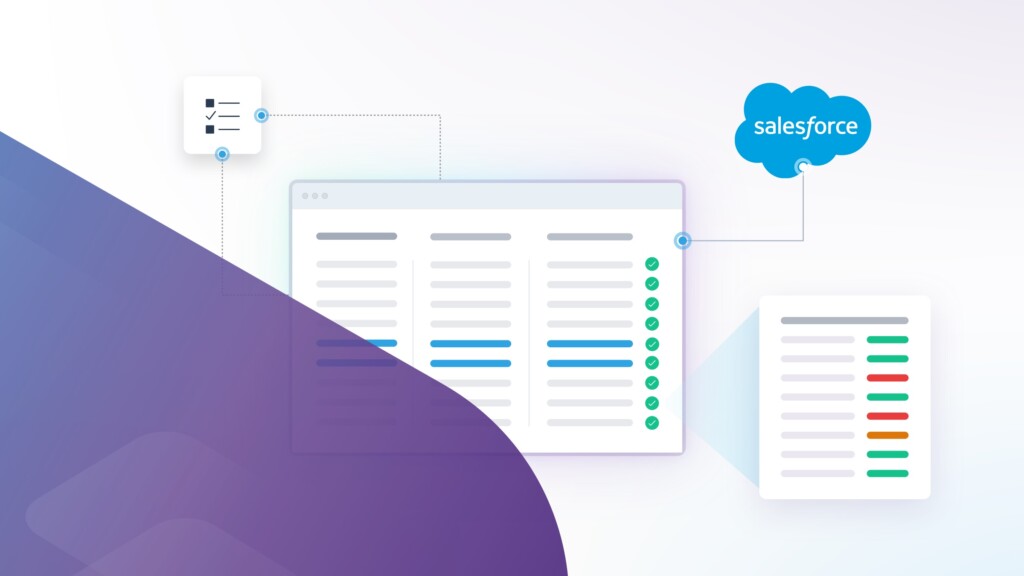Elements.cloud for Salesforce
Salesforce org documentation
Automatically document your Salesforce metadata configuration in one place to gain insights and make changes to your Salesforce org with confidence. Get daily synchronization, not an out-of-date spreadsheet.


Get your mojo back
Automated Salesforce org documentation gives you agility
Salesforce orgs can quickly become complex: unused fields, hundreds of record types, countless managed packages, picklist values collected over time, and workflows with duplicated logic.
Elements is a platform for admins, architects, developers and operational leaders who want a complete view of their Salesforce metadata. Elements delivers the insights and tools needed to make changes to your org with confidence.
Centralised Documentation and Collaboration
Get everyone on the same page. Understand your Salesforce org. Improve your ability to manage change by centralising your documentation for analysts, admins and developers.
Connect Sandbox and Production in seconds
With support for both Salesforce Classic and Lightning, you can start documenting in minutes.
With a one-click setup between Elements and your Salesforce Sandbox and Production orgs.
Synchronise standard and custom objects
We automatically synchronise and analyze your org every day. Synchronisation includes standard and custom metadata, managed packages, and dependency links. Every night you get an email of the changes.
Save time, free up your team
Drive efficiencies and agility.
With our powerful insights and reporting tools you can free up your time or team from laborious manual analysis.
A comprehensive view of your Salesforce org
Elements is a simple yet powerful tool that helps you understand your Salesforce org. First, we automatically profile every aspect of your configuration to create a metadata dictionary. Then, document any part of your configuration, add images and documents, link it to business processes, planned changes, user stories or external resources.
Get a powerful view of your org
Multi-level dependency analysis
Explore your Salesforce org in new ways. Our comprehensive metadata dictionary lets you understand every aspect of your org. What is being used and what is not.
Drill into metadata items to discover related dependencies inside Salesforce and integrated systems.
Nightly synchronisation ensures you’re always up to date.

Metadata dictionary
Analysis and insights. Not an out-of-date spreadsheet
The nightly sync updates Prod and Sandbox orgs metadata dictionaries. It provides metadata info, field and picklist population, flow analysis, metadata dependency and impact analysis, tech debt clean up recommendations, change logs and much more.
Every night. Without fail.
Connect existing documentation
Got documentation? Link it
You already have some documentation, but it is locked up in siloes in different formats. Specifications in GoogleDocs, wireframes Figma, flowcharts in Lucidchart, training in Atlassian or Vimeo etc. No problem. Link them to the related metadata item in the metadata dictionary so it can be seen in context.
Enhance the automated documentation with your own documentation; rich text, process maps and architecture diagrams drawn using Elements, images and more.
Elements synchronises your salesforce org documentation across your sandboxes and production instances, so you can see it immediately throughout your Salesforce org.
Slice and dice
Brainstorm in live workshops
You can run collaborative workshops where everyone can throw post-it notes on to the canvas – Miro-style. And still have the drilldowns, power of access rights and version control. Brainstorm diagrams can be linked to metadata items in the metadata dictionary, giving them context.
Reuse documentation as help
Documentation reporting
Elements allows you to analyse documentation in your Salesforce orgs, highlighting the levels of completion, gaps and areas of improvement.
The reports highlight the percentage of documentation complete and allow you to set goals for competing documentation.
We provide a daily snapshot and trend graphs of high-level metrics and timelines to demonstrate progress.
Documentation
Surface documentation as in-app help
Expose documentation to your end users as point of need training inside Salesforce. This increases adoption and provides an easy mechanism to provide feedback. Watch adoption and customer satisfaction soar.
Frequently asked questions
How do I document my org in Salesforce?
You need to have a metadata dictionary that is kept up to date automatically which you can then use to add manual documentation. The metadata dictionary must provide automated dependency and impact analysis.
How does documentation help impact analysis?
Any decision to make a change needs to be risk assessed. The impact analysis will help inform those decisions but you need a comprehensive vew of the risk. That means be able to see all the documentation in once place that relates to a change.
What is a metadata dictionary?
Salesforce’s metadata refers to the structure and configuration of an organization. The metadata dictionary is a table of the metadata types in Salesforce, including their properties and usage. This is used to understand the impact of changes for stakeholders working with the platform. Examples of metadata listed in the dictionary include custom objects, fields, picklist values, page layouts, and automation.
Check out our guide to Salesforce Metadata for more.
What are the different types of documentation?
Documentation is created through the entire implementation cycle; business analysis, DevOps, and delivery. It includes feedback, requirements, process maps, architecture diagrams, org metadata and analysis, user stories, solution designs, wireframes, specifications, testing scripts and training material.
What is best practice for documentation?
1. A metadata dictionary that is updated nightly
2. Strong business analysis documentation processes
3. All documentation is linked to all the impacted metadata items in the metadata dictionary.
Can I trial Elements?
Yes. Talk to us.













